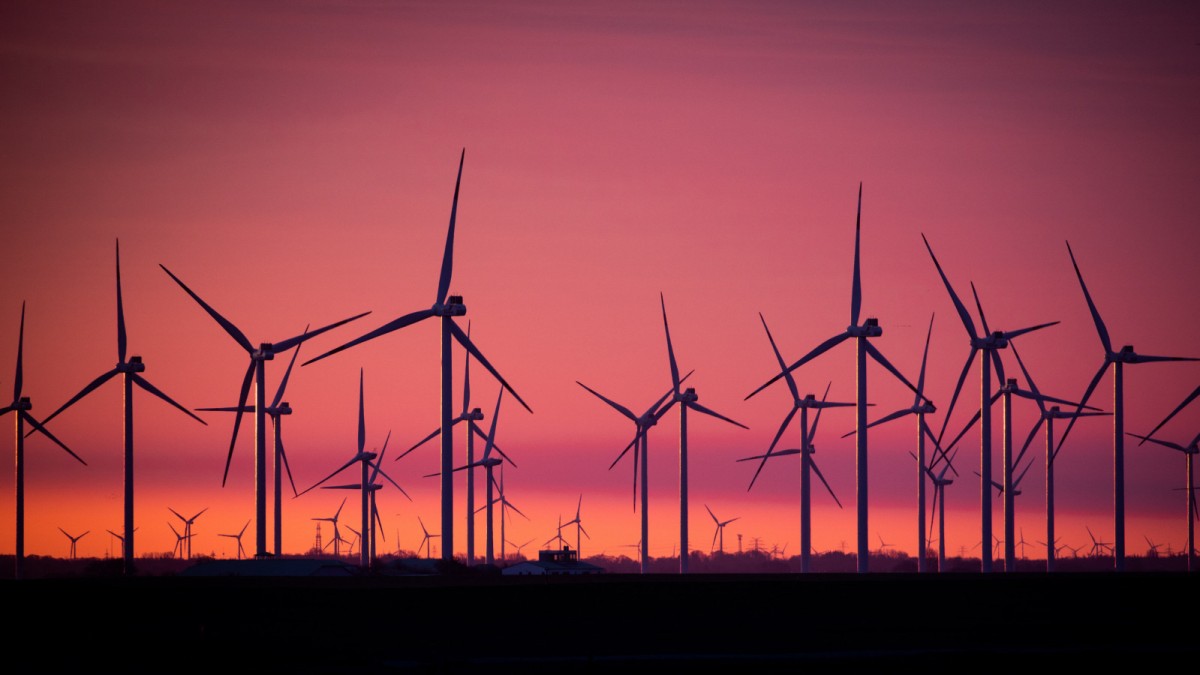Finance Minister Christian Lindner (FDP) was clear: “Renewable energies free us from dependencies. Renewable energies are therefore energies of freedom.” A project like this should be to his liking: A German bank is financing a wind power project with 20 million euros. This makes energy production more sustainable – and Germany more independent of Putin’s gas.
But the lending bank may not write this loan of all things as “green” in the balance sheet in the future. What sounds absurd should apply to many loans in Germany and, in the worst case, slow down the German energy transition, as research by NDR, WDR and Suddeutscher Zeitung demonstrate.
Without the green label on the balance sheet, banks lose many incentives to finance greener projects such as wind turbines or photovoltaic systems more cheaply. There is no sustainability bonus for certain projects, and without that, the loans for wind farms or solar systems are not as attractive as they might be. The possible consequence: the energy transition is not coming as quickly as business and politics would like, especially because of the dependency on Russia.
A presentation by Deutsche Kreditbank (DKB), labeled as “internal”, shows how serious the cut could be. She listed the financed projects in a table: one with 2,400 wind turbines, one with 200 solar parks and another with 750 wind turbines. A bold red X can be seen in the respective rows a few columns next to it, which shows: DKB must not write this financing as sustainable in its balance sheet.
Many wind farm projects fall through the cracks
The curious reason for this can be found in Article 8 of the EU taxonomy, the EU’s new lexicon of green investments. This classification divides investments into sustainable and non-sustainable and is intended to direct more investments into sustainable projects. In the taxonomy, the EU experts describe that a bank can only mark financing for a wind turbine as green if it also fulfills two essential points: A wind power company must have more than 500 employees and it must be “capital market oriented”. be, for example issue bonds or shares.
However, many wind farm projects fall through the cracks. Anyone who builds a wind farm usually founds a project company with five or six employees and otherwise relies on external staff. The companies are also mostly not capital market oriented, but they get the necessary money from banks.
The fact that these loans are not considered green is in turn a problem for banks and possibly for the entire energy transition. This is where a second regulation comes into play, which came into force at the beginning of the year. This should get banks to issue more green loans and thus increase their so-called “green asset ratio”, in English: green financing ratio. This is a key figure that banks will have to report in the future and is intended to show how green a bank’s loans are.
Since many loans cannot be considered green, the “green financing rate” for a bank that finances many wind power projects could possibly be zero percent. A major bank, which in turn finances nuclear and gas companies, may then have a better “green financing rate”. The reason: Many companies in this area have enough employees, are capital market oriented, and the EU sees such projects as green under certain conditions.
For Andreas Gruber, head of the sustainability department at DKB, this has a bad aftertaste. The subsidiary of Bayerische Landesbank has financed many wind power projects in recent years. “Everyone would say that a wind farm is green,” says Gruber. “The fact that we can’t prove this is the opposite of transparency for us – and ultimately also a competitive disadvantage for us.” Although the DKB will continue to finance small projects, there is always one problem: “This taxonomy does not give banks any additional incentive to invest in renewable energies,” he says.
Gruber is not alone with the problem. The GLS, which calls itself the first eco-bank in the world, finances many sustainable projects that do not count as green systems due to the regulation. Board member Thomas Jorberg says: “I assume that the banks will advertise with high quotas, and it is therefore a disadvantage for banks that are now financing small and medium-sized enterprises.” He also sees disadvantages for small project companies, which are no longer as attractive to financiers as large companies.
The EU may also want to consider smaller companies – but not until 2025
Even large companies such as Stadtwerke München, which have planned a whole series of projects for renewable energies, have so far not seen any positive effect on loans for sustainable projects – even though many billions would have to be mobilized quickly in Germany to achieve the climate goals to reach. “We don’t yet see the hoped-for incentives for cheaper loans on the market,” says Sonja Schmutzer from Stadtwerke München. Although they would be big enough, they are not capital market-oriented, but belong to the city – and banks can therefore not book the loans as green.
According to DKB manager Gruber, there would be a simple solution to such financing problems: Banks could voluntarily include loans to smaller companies in the quota – and ultimately call the loans green. “In my opinion, that would be a sensible regulation that is also in the interests of our energy transition,” says Gruber.
According to the EU Commission, the rule was chosen so that small and medium-sized companies have as little bureaucracy as possible. However, it does not rule out the possibility that from 2025 onwards smaller companies or those with no orientation to the capital markets could also be included in the calculation.
–


